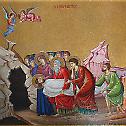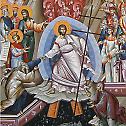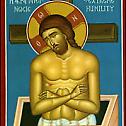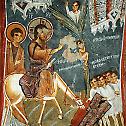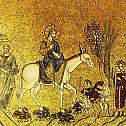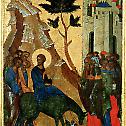The primacy among Orthodox Churches is possessed by the Church of the New Rome, Constantinople, which is headed by a Patriarch who has the title of Ecumenical, and therefore is itself called the Ecumenical Patriarchate, which territorially reached the culmination of its development at the end of the 18th century. At that time there was included in it the whole of Asia Minor, the whole Balkan Peninsula (except for Montenegro), together with the adjoining islands, since the other independent Churches in the Balkan Peninsula had been abolished and had become part of the Ecumenical Patriarchate. The Ecumenical Patriarch had received from the Turkish Sultan, even before the taking of Constantinople by the Turks, the title of Millet Bash, that is, the head of the people, and he was considered the head of the whole Orthodox population of the Turkish Empire. This, however, did not prevent the Turkish government from removing patriarchs for any reason whatever and calling for new elections, at the same time collecting a large tax from the newly elected patriarch. Apparently the latter circumstance had a great significance in the changing of patriarchs by the Turks, and therefore it often happened that they again allowed on the Patriarchal Throne a patriarch whom they had removed, after the death of one or several of his successors. Thus, many patriarchs occupied their see several times, and each accession was accompanied by the collection of a special tax from them by the Turks.
Science
Holy Saturday
27. April 2019 - 18:28On Great and Holy Saturday the Orthodox Church commemorates the burial of Christ and His descent into Hades. It is the day between the Crucifixion of our Lord and His glorious Resurrection. The Matins of Holy Saturday is conducted on Friday evening, and while many elements of the service represent mourning at the death and burial of Christ, the service itself is one of watchful expectation.
Commemoration of Holy Saturday
On Great and Holy Saturday the Church contemplates the mystery of the Lord's descent into Hades, the place of the dead. Death, our ultimate enemy, is defeated from within. "He (Christ) gave Himself as a ransom to death in which we were held captive, sold under sin. Descending into Hades through the Cross ... He loosed the bonds of death" (Liturgy of St. Basil).
Synaxarion: Great and Holy Saturday
27. April 2019 - 1:10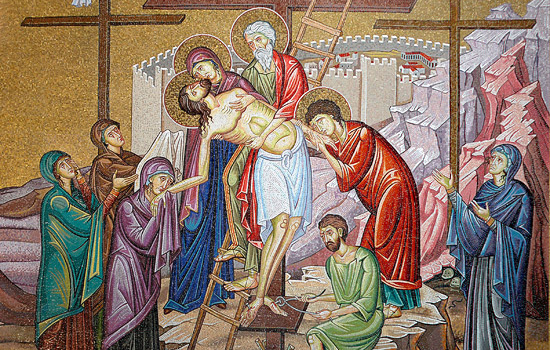 Of all the days the Holy and Great Forty Day Fast is the most distinguished, but more than the Holy Forty Day Fast the Holy and Great Passion Week is exalted, and more than the days of Holy Week Great and Holy Saturday is the most exalted. This week is called great not because these days or hours are more exalted but because the great, portentous and extraordinary deeds of our Savior were accomplished during this week, but especially on this day.
Of all the days the Holy and Great Forty Day Fast is the most distinguished, but more than the Holy Forty Day Fast the Holy and Great Passion Week is exalted, and more than the days of Holy Week Great and Holy Saturday is the most exalted. This week is called great not because these days or hours are more exalted but because the great, portentous and extraordinary deeds of our Savior were accomplished during this week, but especially on this day.
Holy and Great Thursday
25. April 2019 - 10:33 Commemoration of the Mystical (Last) Supper
Commemoration of the Mystical (Last) Supper
And as they were eating, Jesus took bread, and blessed it, and brake it, and gave it to the disciples, and said, Take, eat; this is my body. And he took the cup, and gave thanks, and gave it to them, saying, Drink ye all of it; For this is my blood of the new testament, which is shed for many for the remission of sins. Mt. 26:26–28
The Entry of the Lord into Jerusalem: icons and frescoes
21. April 2019 - 14:03The Entry into Jerusalem is one of the most important events in the last earthly days of our Lord Jesus Christ. The Savior's triumphant arrival at the Holy City on the eve of the Passover preceded His Passion, and was the manifestation of the Old Testament prophecies. The source for the iconography of the Lord's Entry into Jerusalem is the Gospels, where it is related how Christ enters the city seated on the foal of an ass, accompanied by His disciples on the eve of the Judaic Passover, were He will be betrayed to be crucified. The image of the Savior seated on the foal is well known even in early Christian art.
Jesus' Entry into Jerusalem - Palm Sunday
21. April 2019 - 13:42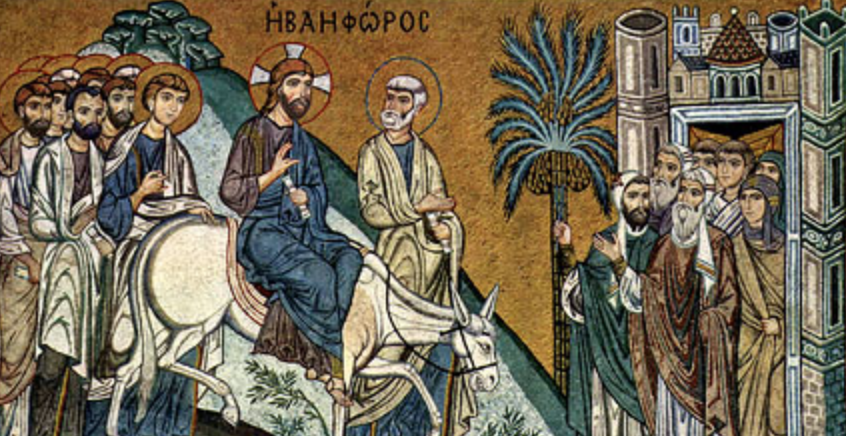 On the Sunday before Pascha, the Holy Church celebrates the Entrance of the Lord into Jerusalem. Six days before the Passover, Jesus came to Bethany, where Lazarus was, whom Jesus had raised from the dead (John 12:1). While tarrying there, in the house of Lazarus, many of those who had accompanied Him on the way from Jericho managed to reach Jerusalem and spread the tidings that Christ the Savior was coming there for the Feast of the Passover, and had stopped for a while in Bethany. Hearing this news, Christ's enemies, the scribes and Pharisees came to Bethany, not only on account of Jesus but also to see Lazarus, Whom He had raised from the dead (John 12:9).
On the Sunday before Pascha, the Holy Church celebrates the Entrance of the Lord into Jerusalem. Six days before the Passover, Jesus came to Bethany, where Lazarus was, whom Jesus had raised from the dead (John 12:1). While tarrying there, in the house of Lazarus, many of those who had accompanied Him on the way from Jericho managed to reach Jerusalem and spread the tidings that Christ the Savior was coming there for the Feast of the Passover, and had stopped for a while in Bethany. Hearing this news, Christ's enemies, the scribes and Pharisees came to Bethany, not only on account of Jesus but also to see Lazarus, Whom He had raised from the dead (John 12:9).
The Decline of the Patriarchate of Constantinople
9. April 2019 - 13:51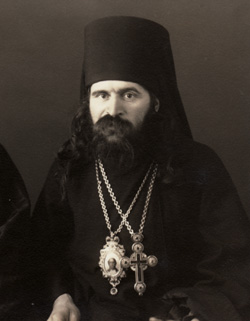 An overview in 1938
An overview in 1938
The following article, which is part of a report on all the Autocephalous Churches made by Archbishop John to the Second All-Diaspora Sobor of the Russian Church Abroad held in Yugoslavia in 1938, gives the historical background of the present state of the Patriarchate of Constantinople. It could well have been written today, apart from a few small points which have changed since then. We reproduce it here to bring more clarity into the current ecclesiastical crisis surrounding the Ecumenical Patriarchate and the Ukraine.


